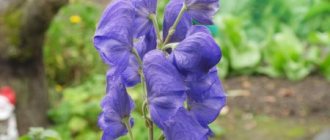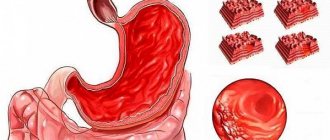Great celandine. A perennial plant from the poppy family.
The tincture is prepared from a whole fresh plant collected during flowering.
The pathogenesis of Chelidonium is found in Hahnemann's Pure Medicines. A. Test gave a well-researched article on Chelidonium in his “Practical Systematization of Homeopathic Pharmacodynamics.”
Physiological action
Buchman, d'Alversleben experimentally showed that the effect of chelidonium on the liver is clearly expressed. The experimenters observed the following symptoms: liver sensitivity, acute and deep pain in it, pain in the right shoulder; light yellow, shiny stool or sparse and whitish; urine is dark colored. Three of them developed yellow or dark skin, and one developed true jaundice.
The test published studies from which it is clear that in addition to the liver, chelidonium also has a noticeable effect on the respiratory tract, which makes it a very valuable medicine for certain types of pneumonia and whooping cough.
Finally, R. Hughes notes its effect on the kidneys: along with the general symptoms of kidney irritation, in one case, a urine test showed the presence of casts, an increase in uric acid and a decrease in sodium chloride. The disorder of the kidneys in this case was so significant that swelling of the extremities appeared.
Characteristic
1. Pain is dull or sharp, under the lower inner angle of the right shoulder blade.
2. Yellowish or grayish discoloration of the skin and sclera.
3. Golden-yellow coloration of stool and urine; leucorrhoea leaves yellow stains on linen.
4. The tongue is thickly coated with a yellowish coating, with red edges on which the imprints of teeth are visible (Mercurius).
5. The patient cannot hold anything in the stomach, with the exception of very hot drink (arsenicum), which relieves nausea and vomiting.
6. All surrounding objects, even your own body, have a fecal odor.
7. The right leg is cold as ice, while the left is normal. Pains of various types in the right half of the body and are caused or worsened by changes in weather. The stool is very little colored or completely white or bright yellow. Menstruation is late, heavy and too long. Leucorrhoea, leaving yellow spots on linen.
Active ingredients
The drug contains:
- Chelidonium majus;
- Fel tauri (ox bile);
- Atropa bella-donna (Belladonna).
Chelidonium majus - Warthog, Greater celandine. A perennial herb with a pungent orange sap, mainly found throughout Europe and Asia. Celandine contains about 20 alkaloids, 4.2% in the grass, 2% in the roots, and also contains vitamins C (170 mg.), A (14.9 mg.). The aerial part of the plant serves as raw material for medicine.
Fel tauri (ox bile) - used in two forms:
1) Fresh - it is received from butchers immediately after the slaughter of bulls; 2) Dried - a yellowish-white hygroscopic powder, having a characteristic bilious odor, the taste changes from sweet to unpleasantly bitter.
Taking this substance internally helps digest food. External use is used as a powder on wounds.
Atropa bella-donna (Belladonna) - popularly called sleepy herb, used as anticholinergic drugs.
Main indications
1. Liver diseases. Corresponds to almost all liver diseases from simple stagnation to severe hepatic colic. The chelidonium corresponds to the right lobe of the liver, and the cardus to the left.
2. Vertigo with liver disorders, with tendency to fall forward.
Pneumonia,
usually in the lower lobe of the right lung with complications from the liver.
Whooping cough,
in which it is good to prescribe chelidonium after corallium rubrum. “Violent spasmodic cough, caused by tickling in the larynx, sensation of dust in the trachea, throat and behind the sternum. These sensations are not relieved by coughing; a strained cough that brings tears to the eyes” (Carzhe).
Kidney inflammation.
Orbital neuralgia,
right-sided, periodic, severe lacrimation. The pain goes from the right zygomatic bone to the teeth or eye, or the pain is concentrated in the supraorbital nerves.
Eye diseases.
Chronic spasm of the eyelids. A thorn on the cornea. Dark water (amaurosis).
Headache,
accompanying disorders of the liver, right-sided, pain can go down behind the ears to the shoulder blade.
Common name for celandine
Warthog is another popular name for celandine. This weed has antitumor properties and has long been used for a variety of growths, including warts, papillomas, and some forms of cancer.
Celandine belongs to the Poppy family, which means that the closest relatives of this plant are poppy and sanguinaria. Like the poppy derivative - opium - the milky juice of celandine has analgesic and antispasmodic properties , and also improves intestinal motility.
The yellow color of the milky juice secreted by the plant caused an association of bile among ancient doctors. Perhaps for this reason, Galen and Dioscorides used celandine to treat jaundice. A rich combination of alkaloids and organic acids gives celandine bactericidal properties.
In folk medicine to this day, celandine is used to treat diseases of the liver and gall bladder. This is due to the plant’s ability to cleanse liver cells, increase the tone of the gallbladder and increase the secretion of bile. But it is necessary to take celandine internally only under the supervision of a doctor, since the plant is poisonous!
Five Other Liver Remedies
The main liver remedies: podophyllum, nux vomica, mercurius solubilis, hydrastis, lycopodium, lachesis, natrum muriaticum, phosphorus, quinine, sepia, hepar sulfur, chelidonium, etc. are in this book. But this is not all, and among others it is also necessary to point out:
Cardus marianus.
An important remedy when the liver disease is secondary to heart disease. Prescribed 5 drops of tincture or 1st dilution. Mirika cerif. Together with purely liver symptoms - pain and a feeling of fullness in the liver area, the urine has the color of beer with yellow foam and with a red-brown sediment; headache with a feeling of heaviness and fullness in the morning. If, in addition, there is chronic catarrh of the nose and throat with viscous and sticky discharge, Mirica will be the most indicated of all medicines. She also has muscle pain and tenderness. Doses: five drops from tincture to the 6th dilution.
Himanthus virg.
This medicine seems to work better in catarrhal cholecystitis, hypertrophy of the liver and jaundice in children. Tincture and low dilutions are used.
Leptandra.
Pain in the liver, mainly in the gall bladder area, radiating to the spine; the tongue is heavily coated, with dark stripes, the stool is dark, tar-colored, mixed with bile and undigested food. Urine is dark. Nausea and vomiting. Used from tincture to 3rd dilution.
Castor.
J. Gallawarden often used this remedy for the following indications: jaundice after hepatic colic and indigestion due to cholelithiasis, which are characterized by heaviness, bloating and belching several hours after eating, especially after fatty, starchy foods; liver colic, especially if the patient has severe nausea, greenish loose stools, dizziness, languor and a feeling of pressure in the stomach. He alternated it with belladonna, if the attack was accompanied by significant bloating of the abdomen, then redness, then paleness of the face and severe pain, from which the patient bent double. He gave both in the 3rd dilution, 10 drops per 200.0 teaspoon of water every 10 minutes alternately.
Chelidonium
Chelidonium majus (Chelidonium majus) -
Greater celandine - belongs to the family
poppy The drug is prepared from a tincture of everything fresh
flowering plant.
CHARACTERISTICS Chelidonium belongs to the poppy family and,
hence closely related to Opium and
Sanguinaria and has many similarities with them. But its closest analogue
is still Lycopodium, with which it is in complementary
relationships. Very often, after unsuccessful attempts to assign
Lycopodium I turned to Chelidonium and with its help achieved a cure.
When applied to the skin, celandine juice causes bubbles to form. WITH
Since ancient times, local injections of an extract of this
plants for cancer. The juice is yellow in color and looks like
bile. Perhaps it was this similarity that served as an indication for Galen and
Dioscorides, who considered celandine a remedy for jaundice. Used in organotropic homeopathy, in material and
semi-material doses, the drug achieved remarkable results with
treatment of liver diseases. According to Rademacher, Chelidonium acts on the central part
liver. It also has a powerful effect on the respiratory system. However, there are also subtle, individual indications for use.
this medicine. The key symptom is a prolonged dull pain,
as if from a bruise, in the area of the lower corner of the right shoulder blade. Chelidonium is capable
affect the spleen and kidneys in the same way as the liver. Besides,
This drug has an affinity for the venous system. Also characteristic
paralytic symptoms. Marked weakness and drowsiness are noted
after eating and upon waking. Chelidonium is a predominantly right-sided remedy (like Sanguinaria
and Lyesinum); along with pain in the angle of the right scapula and symptoms of
on the sides of the liver it is characterized by neuralgia with pain localized above
right eye and in the area of the right zygomatic bone, as well as damage to the blind
intestines and right ovary; lower parts of the right lung. This remedy is considered one of the main drugs for pneumonia with
biliary symptoms.
PSYCHE Marked calm for two to three days, followed by
period of bad mood. Forgetfulness, absent-mindedness. Low mood, despondency with a desire to cry. Anxiety and
anxiety; the patient feels that she has committed a mortal sin.
TYPE Aversion to movement; after a little effort feels
tired. The patient wants to lie down after eating.
CLINIC . Warts. Sinusitis. Haemorrhoids. Herpes. Headache. Gonorrhea. Flu.
Diabetes. Dyspepsia. Jaundice. Gallstones. Burning. Constipation. Yawn. Dental
pain. Itching. Hiccups. Cough. Whooping cough. Colic. Scab on the head. Bleeding
gums Laryngospasm. Pulmonary hemorrhage. Facial neuralgia. Violation
taste perception. Runny nose. Neuralgia. Nephritis. Blurred vision. Nasals
bleeding. Olfactory hallucinations. Numbness. Tumors. Hoarseness.
Belching. Pleurodynia. Pneumonia. Diarrhea. Chest lesions.
Liver lesions. Shot in the neck. Cancer. Vomit. Rheumatism. Rhinitis. Fistula
nasolacrimal duct. Heartbeat. Salivation. Decreased lactation.
Spasms of the glottis. Nausea. Chorea. Eczema.
GENERAL SYMPTOMS Chills or pins and needles sensation accompanying headache or
jaundice. Fresh air provokes chills. Tumors. Cancer.
SKIN For a long time, celandine has been used as an external remedy for
chronic ulcers, as well as for the treatment of warts. Characterized by a pronounced exacerbation of skin sensitivity; disgust for
touches and aggravation from them. Yellowness of the skin, ulceration. Warts. Scab on the head. Eczema. Yellow, yellow-gray, wrinkled. Itching. Burning as if from nettles after
which causes measles-like rashes. Red, painful papules or pustules on various parts of the body. Red miliary rash on the neck, chest and arms.
SLEEP Characterized by drowsiness and yawning, like Opium. Frequent yawning. Sopor. At 14.00 drowsiness appears, which is so pronounced that even
when walking in the fresh air the tester almost falls asleep; it continues
within half an hour. Fresh air increases drowsiness. The patient is drowsy, wants to lie down, but cannot fall asleep. Sleep is full of dreams, not refreshing. Dreams about corpses and funerals.
FEVER Yawning and trembling before the attack, the right foot becomes icy. Daily attacks of severe shaking at 15.00. Chills followed by heat, with melancholy and anxiety. Heat in head, with dark red cheeks, pulsation of arteries; pulse is full;
fainting; speech is difficult; nausea; breathing is rapid; feet
cold. Burning heat in the hands, spreading to the whole body. The skin is moist and there is a burning sensation. Sweating at night, especially towards morning. The patient sweats with the slightest effort.
HEAD Confusion of thoughts. Rush of blood to the head. Feeling of heaviness in the head, moving to the right side of the head,
from where the rheumatic drawing pain spreads to the right half
neck, chest and wrist. Sensation of wave-like movement in the brain. Feeling of vibrations in the brain and heaviness in the forehead and back of the head,
spreading to the temples and significantly increasing after
drinking light beer. Feeling of pressure in the forehead area,
spreading to the eye sockets, in which there is pain with movement
eye. Sensation of a hoop tightening the head in the forehead and temples,
decreasing when the patient closes his eyes. Feeling of being bursting
eyes, spreading to the eye (left), eyelids and root of the nose. Sensation of beating in the temples, synchronous with the pulse, occurring at night, in
bed. A tingling sensation in the crown, especially common
when walking fast. Headache in the afternoon, disappearing instantly. Headache relieved by closing eyes; after eating (severe headache
the pain that occurs when getting out of bed decreases after breakfast). Headache with throbbing in temples; distension, especially towards the forehead;
worse in open air; when coughing; blowing your nose; when bending; better
while eating. Pressing pain in the right side of the forehead. Pressing pain in right temple, right parietal bone and above right eye. The back of the head is so heavy that at night it is difficult to tear it off the pillow;
pulling sensations from top to bottom in the neck. Fresh air makes headaches worse. The headache is accompanied by chills or a sensation of pins and needles on the skin. Coughing and blowing your nose reduce the intensity of the headache.
Dizziness Dizziness with a sensation of a whirlwind in the head, with trembling; nausea; vomiting
bile; occurring upon awakening; and also from 18.00 to 21.00.
EXTERNAL HEAD Pain , hypersensitivity, itching, tingling, sensation
crawling goosebumps on the scalp. The head is covered with scabs. Feeling of coldness in the occiput, rising from the back of the neck; worse with
movement; better at rest. Hair loss, especially in the back of the head.
FACE Red, no heat. Flushes of blood to the face. Upon examination, yellowness of the facial skin is noticeable, especially in the forehead, nose and
cheeks Usually red, the face takes on a dark yellow tint. Sensation of tension and tightness in the cheek bone (left). Sensation of swelling in the right zygomatic bone. Boring and tearing pain in the maxillary sinus. Itching of the facial skin, mainly in the forehead area. Herpes on the face, especially on the chin. Lips are swollen; dry, cracked, crusty, sensitive. Dirty yellow coloration of the face in combination with other signs of cachexia, which
suggests the presence of cancer. Sinusitis.
EYES For a long time, celandine has been used as an external remedy for
eye diseases. Tearing pain in and above the eyes.
Painful sensation of pressure in the upper eyelid. Neuralgic pain over right eye. Tingling between eyebrows. Pressing, burning headache between the eyebrows, causing the patient
close eyes; better after eating, but pain after three quarters of an hour
resumes. Redness of the edges of the eyelids. Clonic spasms of the eyelids. Redness of the conjunctiva. The sclera is dirty yellow. Dull, continuous pain in the eyeballs when moving them. Constriction of the pupils. Blurred vision. The right eye sees through the veil in the morning when waking up. “Blind” spots in the field of vision, as if looking through tears. Fistula of the nasolacrimal duct. Fresh air increases pain in right eye.
EARS Pain behind right ear. Tearing pain extending from right cheekbone to ears
shells, going around them and passing to the upper part of the occipital bone. Sensation as if wind were whistling in both ears. The patient does not hear anything while coughing. Noise in the ears, reminiscent of the sound of a distant storm.
NERVOUS SYSTEM Neuralgia. Chorea. Numbness of toes.
RESPIRATORY SYSTEM A characteristic sensation of “dust” in the respiratory tract, causing
cough. Flu. Pulmonary hemorrhage. Pneumonia. Pleurodynia. Whooping cough.
CHEST Lesions of the chest. Congestion of blood to the upper part of the chest. Tingling in the right hypochondrium; on the left side of the chest. Deep pain throughout the right side of the chest. Pain in the area of the lower ribs of the right half of the chest. Increased breathing and tightness in the chest. Nocturnal attacks of asthma with a sensation of constriction in the diaphragm.
COUGH Paroxysmal cough; with the discharge of lumps of mucus. Cough occurs
after waking up and on rising, with a sensation as if the airways were in
There was dust behind the sternum. Coughing attacks with copious expectoration;
with chest pain, especially at night. Attacks of dry cough at 16.00. When you cough, mucus comes out of your mouth.
THROAT Sensation as if the larynx was pressing on the esophagus, preventing swallowing. A feeling of suffocation, as if too much food were stuck in the throat. Rush of blood to the throat. The pharynx mucosa is hyperemic; swelling of the uvula and
tonsils; shooting in the tonsils; burning and scratching in the throat. Laryngospasm. Hoarseness of voice. Spasms of the glottis. Pain in the larynx and sacrum during coughing. Acute pain, as if from an injection; tingling; tickling; compression in the larynx area. Feeling of pressure, as if air could not get inside; feeling
swelling in the larynx (right). Pressure, heat and irritation in trachea.
NOSE In Chelidonium, like in Lyesinum, there is swelling of the wings of the nose.
with chest lesions. Nosebleeds. The tip of the nose is swollen and red. Dry rhinitis with (unilateral) nasal congestion. Liquid runny nose. When you wake up in the morning, black blood comes out of your nose.
mucus. Nasal congestion combined with liver symptoms. Olfactory hallucinations (when bending over).
HEART AND CIRCULATION Tingling and sharp, shooting pain in and around the heart; in the chest
muscles. Periodic palpitations. Palpitation of the heart with a feeling of tightness in the chest.
MOUTH Impaired taste perception. Thirst with dry mouth and throat. Dryness in
mouth Tongue: nervous, pointed; covered with a thick coating, yellow with red
edges; with teeth prints. Drooling: bitter; mixed with blood. Bad smell. When you cough, mucus comes out of your mouth. • taste. Slimy, bitter; the food has a natural taste. Bitter taste in the mouth outside of meals.
TEETH Bursting pain spreading from the right ear to the teeth, arising
after noon. Toothache with facial neuralgia; worse from warming;
in bed at night; better from cold water; twitching in lower left
molars; feeling of fullness in the maxillary sinus. Bleeding gums.
STOMACH For many gastric symptoms, Chelidonium is indicated.
is an “aversion to cheese.” Hiccups. Dyspepsia. Frequent belching. Belching with juniper taste. Nausea with feeling of heat in the stomach. Feeling of cold in the stomach. Bile vomiting. Gnawing sensation in stomach, better after eating. Cutting pain in stomach when yawning; occurs soon after eating. Stomach symptoms are relieved by eating: all complaints become less
pronounced after lunch. The patient wants to lie down after eating. Stomach pain is relieved by lying on the left side.
APPETITE Loss of appetite. • addictions. The patient prefers hot drinks, which
It gets better. Desire for milk, milk seems pleasant. Wish
sour. • disgust. To the cheese. To the meat.
STOMACH Colic; retracted navel. Increased sensitivity and pain when
palpation in the area of the right (and left) hypochondrium and epigastrium. Pain in the region of the navel, with a feeling as if the abdomen were being pulled together with ropes. Overflow of the abdominal cavity with blood; bloating, rumbling. Liver lesions. Jaundice. Gallstones. Tingling in the region of the liver and spleen. Shooting punctures through
liver in the back; spasmodic pain in the inner corner of the scapula. Jaundice is accompanied by chills or a crawling sensation on the skin. Desire for hot drinks; the patient's stomach holds only boiling water. Nausea in pregnant women is typical, accompanied by a desire to eat, with
ameliorated by milk.
ANUS AND RECTUM You may experience either constipation (clay-colored stools) or diarrhea with light yellow stools. Mucusy diarrhea at night. The chair is white; bright yellow; resembles clay. Constipation: stool is dense, in the form of hard lumps. Some blood comes out in the stool. Periodically, there is tension and a feeling of pressure in the rectum,
as before passing stool, but without it. Burning; pain; feeling
contractions; paresthesia and itching; tingling and itching in the rectum and anus
(haemorrhoids). Constipation. Diarrhea. Haemorrhoids.
URINARY SYSTEM Pressure in the bladder with scanty urine output. Spasmodic pain in the region of the right kidney and liver. Burning, shooting and cutting in the urethra. Frequent and persistent urge to urinate. Urine profuse, whitish, foamy. red and cloudy, dark. Copious discharge of whitish and foamy urine. Lying on your stomach reduces pain in the kidneys and bladder. Nephritis. Diabetes.
WOMEN Pain in the right ovary.
MENSTRUATION Delayed; profuse; long menstruation.
MAMRY GLANDS Decreased lactation. The effect of Sanguinaria on breast cancer is widely known, and Chelidonium
is her closest relative. According to Snow, it is generally accepted that
and Opium, in addition to its narcotic properties, has
ability to stop the growth of cancerous tumors.
PREGNANCY. CHILDREN. Nausea in pregnant women is typical, accompanied by a desire to eat,
better from milk.
MEN Drawing pain in the spermatic cord; in the testicles. Eczematous irritation on the male genitals or anal area. Soreness, swelling of the right testicle with severe sensitivity and
pulling sensation in the spermatic cord. Gonorrhea.
JOINTS Shootings in the right hip joint. Drawing pain in the hip joints. Rheumatism.
NECK Shooting in the neck. Neck muscle stiffness; the head is tilted to the left.
Pulling sensations in the area of the posterior cervical muscles and in the back of the head.
BACK Tingling in the area of the right shoulder blade (this limits arm movements). Constant pain under the lower angle of the right shoulder blade on the inside. Severe pain in the area of the lower angle of the left shoulder blade. Tearing, pressing pain in the back, as if one of the vertebrae
broken in half, occurring when bending forward or backward. Drawing sensations extending from the sacrum to the right side
epigastric region.
LIMB Twitching in arms and legs. Neuralgic pain in the limbs. Rheumatism.
The slightest touch on any area becomes extremely
painful; sweating that does not bring relief. Limbs seem
heavy, constrained and paralyzed; limbs are flabby; trembling. • Hands. Pain in the right or left shoulder joint. The patient cannot
freely use the right (as well as left) shoulder and forearm, sometimes
this condition is accompanied by tearing pain. Stiffness in the wrist.
Stiffness and tingling in the wrist area. Cold fingertips. • Legs. Shootings in the right hip joint. Nagging pain in
hip joints, thighs, legs and feet, more on the right. Feeling
heaviness in the lower extremities. Swelling of the feet, mainly around
ankle joints. Numbness of toes. Unbearable pain in heels,
as if they were squeezed into shoes that were too narrow.
INFECTIONS Flu. Whooping cough. Herpes. Gonorrhea.
MODALITIES • Worse. From changes in weather. From warming up. Pressure increases
some symptoms. From movement. At 4.00 and also at 16.00. In the second half
day. • Better. Pressure. All complaints decrease after lunch. From
cold water. After rest.
RELATIONSHIPS Teste, who tested Chelidonium, placed him at the head of the group,
including Capsicum and Viola odoratum. Antidotes for Chelidonium are acidic foods, wine and coffee;
Camphora (Teste). Chelidonium is an antidote for Bryonia. Compatible drugs : Arsenicum album, Bryonia, Corallium rubrum (whooping cough); Ledum, Sulfur (lung hepatization); Ipecacuanha (spasm of the glottis). It should be compared : pain below the angle of the scapula - with Juglans cinerea, Chenopodium (below the angle of the scapula and closer to the spine). Ranunculus bulbosus (along the edge of the left scapula; pain permeates the entire chest
cell), Lobelia (along the inner edge of the right scapula), Bryonia (Bryonia is the closest analogue of Chelidonium in many respects
symptoms - yellow tongue, enlarged liver; Lyesinum is complimentary
Chelidonium for many symptoms, but there are some differences: for
Lyesinum has a sour taste in the mouth, Chelidonium has a bitter taste,
Lyesinum there is a rumbling in the left hypochondrium and a feeling of fullness
after eating a small amount of food. Symptoms of Lyesinum and Belladonna
start and end suddenly; in Chelidonium it suddenly stops
headache); Mercurius (pneumonia with bilious symptoms. Sharp pain piercing
right lung and radiating to the back; Mercurius is characterized by mucous stools and
pronounced feeling of discomfort before and after defecation, Chelidonium stool
usually goes away without pain); Kali carbonicum (advanced cases of pneumonia, profuse effusion in
pleural cavity, wheezing when coughing, worsening at 2.00-3.00); Colchicum (nausea with desire for food); Carbo animalis (yellow colored leucorrhoea); Actea racemosa (sensation of wave-like movements in the brain); Asonitum, Belladonna, Bryonia, Calcarea carbonica, Capsicum, China, Gambogia,
Graphites, Ignatia, Nitricum acidum, Nux vomica, Phosphorus, Podophyllum,
Pulatilla, Rhus toxicodendron, Sepia, Spigelia, Sulfur, Viola odorata.
Source: John Henry Clarke. “Dictionary of Practical Materia Medica in 6 volumes” (Homeopathic Medicine Publishing House. Moscow, 2001).






